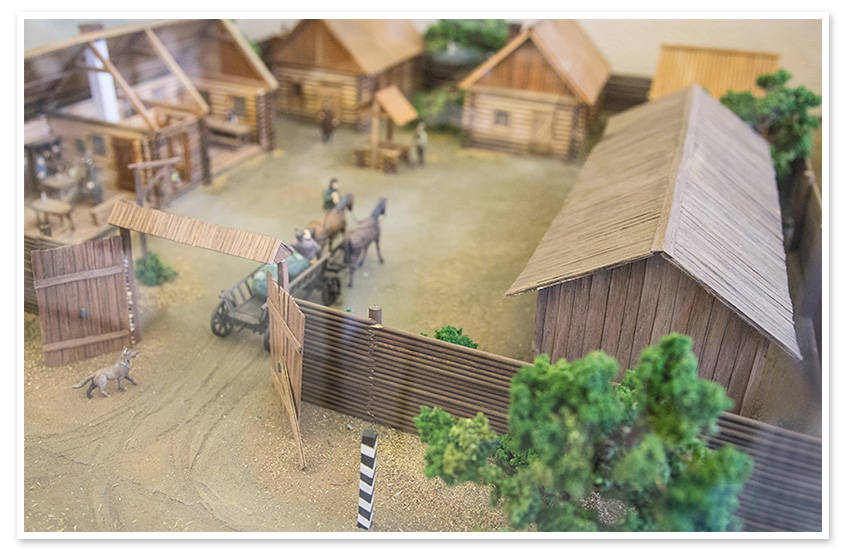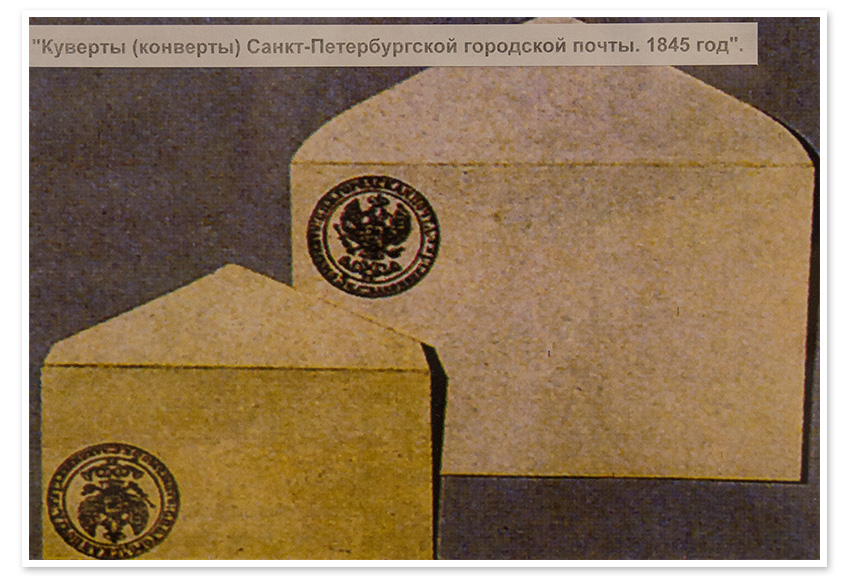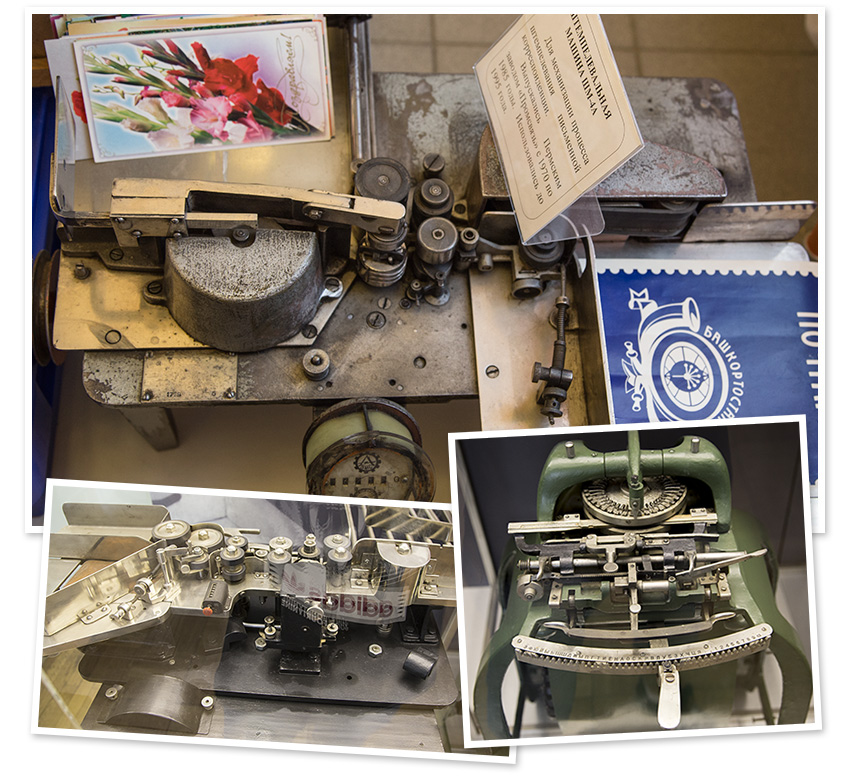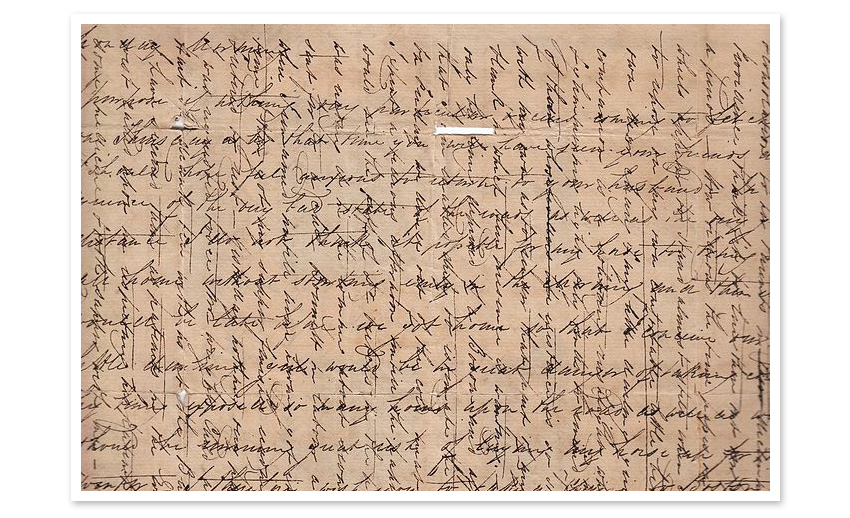The history of the development of communication. post office
It is no secret to anyone that world history is closely connected with the exchange of information - without this process, the existence of human society is simply impossible. Communication, that is, the transmission and reception of information using various technical means, plays a key role in such an exchange. In very ancient times, people did not have multi-core smartphones, so they used more primitive means: voice, sounds, fire, smoke, and the like.

Over time, the means and forms of communication changed - those who are smarter, later came up with writing and began to transmit information in writing. Since then, information has become transmitted in a more long-playing form and is especially intense, and its first transfer can be safely considered the birthday of the mail.

Today, the word "Mail" means the establishment of a post office (post office, department), and a message, and a set of received correspondence (letters, parcels).
')
The most interesting museum exhibits about the mail were, perhaps, in the museum of communications to them. A.S. Popov in St. Petersburg and in the museum of mail in Ufa (about zero kilometer).
Historians hold the opinion that the Russians adopted the postal service from the invaders, the Mongols. Then on the main roads postal stations appeared (at a distance of 30 to 100 miles from each other) - “holes”, in which “yamchi” (messengers) changed horses. In turn, the words "pits" and "yamchi" are derived from two Tatar words - "jyam" (road) and "yam-chi" (conductor). Hence the word "driver", which called people involved in the transport of people and goods on horse-drawn transport. Yamshchiyik, not gonii horses ...
The work of messengers was worn out (and subjected to harsh punishments in the case of unfair performance of duties or failure to deliver a package), so they tried to recruit more people in their ranks. For example, the first parcel from Ufa to Moscow (via Kazan) in 1639 took Grishka Pogorelsky from an equestrian messenger as much as 70 days (possibly because he had irrelevant maps in the navigator). Try to ride a horse for 70 days ... and this is only in one direction.

The layout of the postal station of 17-18 century
The word "postman" (by the way, also borrowed the word) in pre-revolutionary Russia in postal business began to be used from 1716, and before that the employees delivering mail were called "postmen." At the same time, there were variations depending on the type of spam mail: postmen delivered nonresident mail, and city letters were delivered by pochmonostsy.
Seriously, with his reforms, the mail was pumped by Peter I - it was under his rule that postal service in Russia appeared in all the main cities of the country. The post office became state, the first post offices in Russia were created, post offices were opened in provincial cities, and the post of postmaster was introduced.
At the same time, a new uniform for postal employees was introduced: a dark green woolen caftan with a departmental emblem - a postal horn (to alert you of your arrival) and a red eagle (the coat of arms meant that the postal worker is a civil servant and is under the care and protection of a large brother). Later, they began to use a pad bell for sounding.

By the end of the 18th century, the length of postal routes in Russia amounted to no less than 33 thousand miles (here it is suggested that it is 35,204.4 kilometers).
By the way, since we started talking about transport, it is impossible not to mention the railway. The first post cars (between St. Petersburg and Moscow) began to go from 1851.

As now, so before, free cheese was only in mousetraps and cheeseburgers, punched like hamburgers. Simply put, sending letters was a pleasure not free.
Letters at that time were written on paper, which was then folded with text inside. Outside on the clean side indicated the address, and the place of addition is often sealed with wax. Then the letter was taken to the post office, where the employee (after weighing the shipment and receiving money for sending it) put an imprint of a special stamp. The result of the manipulation was called the envelope (presumably from the English “to cover” - to close) and was the prototype of modern envelopes.

A stamp is a type of printing device that is used at a post office to receive (manually or mechanically) stamp prints used to extinguish postage stamps, confirm receipt of a postal item, control the route and time spent on the way, and also make any marks.

Well, the so-called impression itself is also called, which itself carries quite a lot of different information (depending on color, form, content, purpose, and so on).
The volume of shipments grew steadily, and soon such an imperfect payment method became very quickly superimposed, primarily for the service employees themselves. Therefore, in order to streamline the postage system in 1845, the postal department carried out a number of reforms, among which was the introduction (first in St. Petersburg and then in Moscow) of the first signs of postal payment. This is how stamp envelopes appeared - the same covers, but with a stamp already printed on the front side. Initially, they had circulation only within the city, but already in 1848, variants of different denominations appeared, including for non-resident correspondence.

Since then, the appearance and design of the envelope has remained virtually unchanged.
The stamp system was replaced by postage stamps - special signs, franking (the form of pre-payment by the sender of the shipment and delivery of the shipment) which indicates the fact of payment for the services of the department (the shipment and delivery of both domestic and international correspondence). Small and beautiful pieces of paper with a given value (face value) and a rich history.

My modest collection)
It is believed that the Englishman Rowland Hill, whose mother worked at the post office and repeatedly told about the difficulties of work, the shortcomings of the postal system and the high cost of payment, became their inventor in 1837. To this, Hill once advanced the idea of a uniform postal rate (paid by the sender), releasing the pamphlet "Reform of the Post, Its Importance and Purpose." It was there that the appearance of the stamps was provided for: “It would be possible to make a difference. It may be that this complexity (the use of labeled envelopes in certain cases) can be eliminated by means of a piece of paper. large enough to bear the mark, and covered on the back with a thin adhesive layer that the sender can, with a little wetting, adj live on the back of the letter, in order to avoid having to redirect it. "). A little later he became the author of the first brand (“Black Penny”), well, and then it started…

The world's first postage stamp
In Russia, stamps appeared a little later - in 1857, A.P. Charulsky (an employee of the postal department) took over foreign experience and suggested introducing a stamp system in our cold lands.
 The first projects of Russian postage stamps (submitted by F.M. Kepler on October 21, 1856) were rejected by Charulsky. Later, the senior engraver of the EZGB, Franz Mikhailovich Kepler, connected to the brand’s project - after reading the Charukovsky fidbek for the first tests, he began to make the first samples - from several options, one was chosen, which became the first postage stamp of Russia. Beautiful? ;)
The first projects of Russian postage stamps (submitted by F.M. Kepler on October 21, 1856) were rejected by Charulsky. Later, the senior engraver of the EZGB, Franz Mikhailovich Kepler, connected to the brand’s project - after reading the Charukovsky fidbek for the first tests, he began to make the first samples - from several options, one was chosen, which became the first postage stamp of Russia. Beautiful? ;)
The first stamps had to be cut with scissors, although very soon they came to the conclusion that this was not the most convenient option. In 1847, Henry Archer, an employee of the Dublin Post Office, suggested making a perforation, that is, piercing through round holes all around the brand's perimeter. But few people know that the perforation of postage stamps is made not only to facilitate the separation of stamps - the shape of the perforation and its dimensions are also one of the ways to protect against counterfeiting.
The appearance of stamped envelopes simplified the payment of the shipment and made the presence of the postal official optional. All this contributed to the rapid appearance of mailboxes (for collecting and storing letters) right on the streets of the city.

At different times there were a huge variety of mailbox design options - both street, and "home", and anti-vandal, and even with devices for issuing stamps - in many museums, as a rule, their entire collections.

It is one thing - civilian letters, and quite another - the need to exchange information during hostilities, when mail was in demand even more. The Great Patriotic War manifested itself - the movement of millions of people caused a huge increase in the postal exchange flow, because of which the mail (as well as the telegraphs, about which a little later) worked around the clock, processing thousands of packages daily. To understand the scale - in the Bashkir republic alone (Ufa was an important component of the postal system of those times) during the war years more than 20 million letters were promptly processed, sent and delivered.

Minute of entertaining arithmetic: the average speed of an LTE connection from a Megaphone in St. Petersburg was 50 megabits per second for me. If we assume that all 20 million letters in the Bashkir republic would have been written on A4 sheets (on both sides, that is, about 5000 characters per page) during the war years, then the resulting text volume (20.000.000 * 5 Kb = 95.367 GB) could be downloaded in 4.5 hours. It would be naive to suppose that the entire country could be completely deflated in a week ... so what I mean.
By the way, letters and postcards addressed to the front were sent free of charge.
At the end of the last millennium, technology and technology began to develop particularly intensively, in Russia there were mobile communications and the Internet. The high level of penetration of these technologies has significantly affected the nature of communication between people: the flow of simple written correspondence continues to decline.
But the inhabitants of the country have practically lost nothing (except for the joy of receiving a warm lamp letter) - after all, the electronic mail has come to replace the paper mail. To transfer information, you don’t need to make a bonfire, to get mailing pigeons ... and you don’t even need to know where the mailbox nearest to the house is - just get the phone / tablet / laptop anywhere in the city and be connected. Any mailing address, instant sending and receiving emails, any file attachments, collective correspondence, forwarding, sorting - yes, that's all. Being thousands of kilometers away from the office, I was aware of what was happening at work.

But once sending in one direction only would take more than one day ...
To be continued.
// Related Links (Wikipedia): All About Mail
You have just read the first article about the history of communication, all the rest will be published on the pages of a special project with MegaFon .
! important: The article does not pretend to the completeness and accuracy of all data.

Over time, the means and forms of communication changed - those who are smarter, later came up with writing and began to transmit information in writing. Since then, information has become transmitted in a more long-playing form and is especially intense, and its first transfer can be safely considered the birthday of the mail.

| By the way, the word "mail" comes from the Polish "poczta" and the Italian "posta". The latter, in turn, originated from the “posta” and the Late Latino “posita”, which most likely is an abbreviation from the “statio posita in ...” - a stop, a station for variable horses located in a certain place. Thus, originally this word meant a station for the exchange of postal horses or couriers. The word “post” in the meaning of “mail” was first used in the 13th century. |
')
The most interesting museum exhibits about the mail were, perhaps, in the museum of communications to them. A.S. Popov in St. Petersburg and in the museum of mail in Ufa (about zero kilometer).
This is me, the postman Pechkin, brought a parcel for your boy
Historians hold the opinion that the Russians adopted the postal service from the invaders, the Mongols. Then on the main roads postal stations appeared (at a distance of 30 to 100 miles from each other) - “holes”, in which “yamchi” (messengers) changed horses. In turn, the words "pits" and "yamchi" are derived from two Tatar words - "jyam" (road) and "yam-chi" (conductor). Hence the word "driver", which called people involved in the transport of people and goods on horse-drawn transport. Yamshchiyik, not gonii horses ...
The work of messengers was worn out (and subjected to harsh punishments in the case of unfair performance of duties or failure to deliver a package), so they tried to recruit more people in their ranks. For example, the first parcel from Ufa to Moscow (via Kazan) in 1639 took Grishka Pogorelsky from an equestrian messenger as much as 70 days (possibly because he had irrelevant maps in the navigator). Try to ride a horse for 70 days ... and this is only in one direction.

The layout of the postal station of 17-18 century
The word "postman" (by the way, also borrowed the word) in pre-revolutionary Russia in postal business began to be used from 1716, and before that the employees delivering mail were called "postmen." At the same time, there were variations depending on the type of spam mail: postmen delivered nonresident mail, and city letters were delivered by pochmonostsy.
Seriously, with his reforms, the mail was pumped by Peter I - it was under his rule that postal service in Russia appeared in all the main cities of the country. The post office became state, the first post offices in Russia were created, post offices were opened in provincial cities, and the post of postmaster was introduced.
At the same time, a new uniform for postal employees was introduced: a dark green woolen caftan with a departmental emblem - a postal horn (to alert you of your arrival) and a red eagle (the coat of arms meant that the postal worker is a civil servant and is under the care and protection of a large brother). Later, they began to use a pad bell for sounding.

By the end of the 18th century, the length of postal routes in Russia amounted to no less than 33 thousand miles (here it is suggested that it is 35,204.4 kilometers).
By the way, since we started talking about transport, it is impossible not to mention the railway. The first post cars (between St. Petersburg and Moscow) began to go from 1851.

Covers and stamps
As now, so before, free cheese was only in mousetraps and cheeseburgers, punched like hamburgers. Simply put, sending letters was a pleasure not free.
Letters at that time were written on paper, which was then folded with text inside. Outside on the clean side indicated the address, and the place of addition is often sealed with wax. Then the letter was taken to the post office, where the employee (after weighing the shipment and receiving money for sending it) put an imprint of a special stamp. The result of the manipulation was called the envelope (presumably from the English “to cover” - to close) and was the prototype of modern envelopes.

A stamp is a type of printing device that is used at a post office to receive (manually or mechanically) stamp prints used to extinguish postage stamps, confirm receipt of a postal item, control the route and time spent on the way, and also make any marks.

Well, the so-called impression itself is also called, which itself carries quite a lot of different information (depending on color, form, content, purpose, and so on).
| This is interesting: it is believed that the stamp was invented by the royal tax collector Henry Bishop (H.Bishop), appointed in 1660 by the first general postmaster of the United Kingdom. Initially, the invention was intended to control the time of passage of the mail, and the imprint contained only information about the month and day of delivery of the letter. And since stamps with a changeable date were not yet able to do so, the set for postal stations consisted of 366 stamps. |

Since then, the appearance and design of the envelope has remained virtually unchanged.
Stamps
The stamp system was replaced by postage stamps - special signs, franking (the form of pre-payment by the sender of the shipment and delivery of the shipment) which indicates the fact of payment for the services of the department (the shipment and delivery of both domestic and international correspondence). Small and beautiful pieces of paper with a given value (face value) and a rich history.

My modest collection)
It is believed that the Englishman Rowland Hill, whose mother worked at the post office and repeatedly told about the difficulties of work, the shortcomings of the postal system and the high cost of payment, became their inventor in 1837. To this, Hill once advanced the idea of a uniform postal rate (paid by the sender), releasing the pamphlet "Reform of the Post, Its Importance and Purpose." It was there that the appearance of the stamps was provided for: “It would be possible to make a difference. It may be that this complexity (the use of labeled envelopes in certain cases) can be eliminated by means of a piece of paper. large enough to bear the mark, and covered on the back with a thin adhesive layer that the sender can, with a little wetting, adj live on the back of the letter, in order to avoid having to redirect it. "). A little later he became the author of the first brand (“Black Penny”), well, and then it started…

The world's first postage stamp
In Russia, stamps appeared a little later - in 1857, A.P. Charulsky (an employee of the postal department) took over foreign experience and suggested introducing a stamp system in our cold lands.
 The first projects of Russian postage stamps (submitted by F.M. Kepler on October 21, 1856) were rejected by Charulsky. Later, the senior engraver of the EZGB, Franz Mikhailovich Kepler, connected to the brand’s project - after reading the Charukovsky fidbek for the first tests, he began to make the first samples - from several options, one was chosen, which became the first postage stamp of Russia. Beautiful? ;)
The first projects of Russian postage stamps (submitted by F.M. Kepler on October 21, 1856) were rejected by Charulsky. Later, the senior engraver of the EZGB, Franz Mikhailovich Kepler, connected to the brand’s project - after reading the Charukovsky fidbek for the first tests, he began to make the first samples - from several options, one was chosen, which became the first postage stamp of Russia. Beautiful? ;)The first stamps had to be cut with scissors, although very soon they came to the conclusion that this was not the most convenient option. In 1847, Henry Archer, an employee of the Dublin Post Office, suggested making a perforation, that is, piercing through round holes all around the brand's perimeter. But few people know that the perforation of postage stamps is made not only to facilitate the separation of stamps - the shape of the perforation and its dimensions are also one of the ways to protect against counterfeiting.
Mailboxes
The appearance of stamped envelopes simplified the payment of the shipment and made the presence of the postal official optional. All this contributed to the rapid appearance of mailboxes (for collecting and storing letters) right on the streets of the city.

At different times there were a huge variety of mailbox design options - both street, and "home", and anti-vandal, and even with devices for issuing stamps - in many museums, as a rule, their entire collections.

War years
It is one thing - civilian letters, and quite another - the need to exchange information during hostilities, when mail was in demand even more. The Great Patriotic War manifested itself - the movement of millions of people caused a huge increase in the postal exchange flow, because of which the mail (as well as the telegraphs, about which a little later) worked around the clock, processing thousands of packages daily. To understand the scale - in the Bashkir republic alone (Ufa was an important component of the postal system of those times) during the war years more than 20 million letters were promptly processed, sent and delivered.

Minute of entertaining arithmetic: the average speed of an LTE connection from a Megaphone in St. Petersburg was 50 megabits per second for me. If we assume that all 20 million letters in the Bashkir republic would have been written on A4 sheets (on both sides, that is, about 5000 characters per page) during the war years, then the resulting text volume (20.000.000 * 5 Kb = 95.367 GB) could be downloaded in 4.5 hours. It would be naive to suppose that the entire country could be completely deflated in a week ... so what I mean.
Interesting fact: in the pre-marvel period, letters were often written using the free space of the sheet both along and across. This was done in order to save paper and money to pay for one mail message. |
Nowadays
At the end of the last millennium, technology and technology began to develop particularly intensively, in Russia there were mobile communications and the Internet. The high level of penetration of these technologies has significantly affected the nature of communication between people: the flow of simple written correspondence continues to decline.
But the inhabitants of the country have practically lost nothing (except for the joy of receiving a warm lamp letter) - after all, the electronic mail has come to replace the paper mail. To transfer information, you don’t need to make a bonfire, to get mailing pigeons ... and you don’t even need to know where the mailbox nearest to the house is - just get the phone / tablet / laptop anywhere in the city and be connected. Any mailing address, instant sending and receiving emails, any file attachments, collective correspondence, forwarding, sorting - yes, that's all. Being thousands of kilometers away from the office, I was aware of what was happening at work.

But once sending in one direction only would take more than one day ...
To be continued.
// Related Links (Wikipedia): All About Mail
You have just read the first article about the history of communication, all the rest will be published on the pages of a special project with MegaFon .
! important: The article does not pretend to the completeness and accuracy of all data.
Source: https://habr.com/ru/post/192638/
All Articles